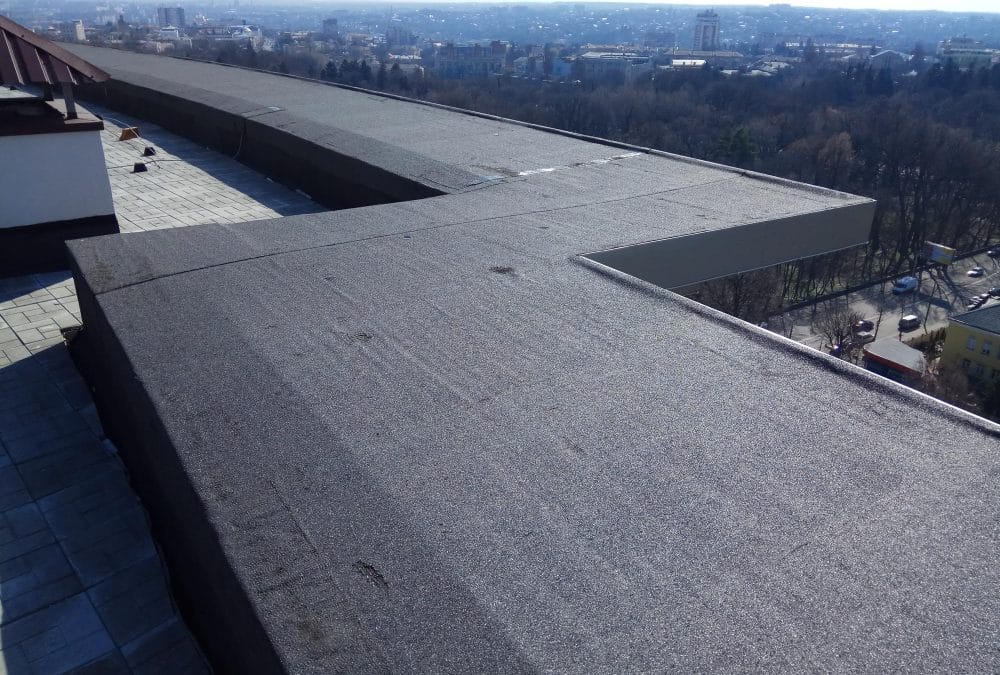Maintaining a commercial modified bitumen roof is crucial for protecting your investment. These roofs, known for their durability and flexibility, need regular care to perform at their best. Ignoring maintenance can lead to costly repairs and shorten the lifespan of your roof.
Regular inspections help spot early signs of damage like cracks or blisters. By addressing these issues promptly, you can avoid extensive damage and ensure your roof lasts longer. It’s also important to keep your roof clean. Debris like leaves and dirt can trap moisture, leading to mold growth or water damage. Proper cleaning methods can prevent these problems and keep your roof in good condition.
Each season brings its own challenges for roofing. From heavy rain in the spring to snow in the winter, your roof faces different stresses throughout the year. Understanding how to care for your roof during each season helps prevent damage and keeps your roof functioning properly.
By following essential maintenance techniques, you can extend the life of your commercial modified bitumen roof and save money in the long run. Regular care not only protects your roof but also ensures the safety and comfort of everyone inside the building.
Regular Inspections and Early Detection
Regular inspections are key to maintaining a commercial modified bitumen roof. Conducting thorough checks twice a year, and after severe weather, helps spot problems before they escalate. Here’s how to inspect your roof effectively:
1. Visual Inspection: Walk around your building and look for visible damage from the ground. Use binoculars to spot cracks, blisters, or areas where the surface looks worn out. These signs suggest the roof might need attention.
2. On-Roof Inspection: If it’s safe and you’re comfortable doing so, get on the roof. Pay close attention to the seams and edges, as these are common areas where problems start. Look for loose or missing materials, and check for any pooling water, which can indicate drainage issues.
3. Check Interior Ceilings: Go inside the building and look at the ceilings. Water stains or mold growth can signal a leak that needs immediate repair.
By catching problems early, you can address them before they lead to more significant damage. This proactive approach saves money and ensures your roof lasts longer. Regular inspections keep your roof in tip-top shape, protecting your building and its contents.
Proper Cleaning Methods
Keeping your commercial roof clean is vital for its longevity. Dirt, leaves, and other debris can collect on the surface and cause damage over time. Here’s how to clean your modified bitumen roof properly:
1. Remove Debris: Start by clearing off leaves, branches, and other debris. Use a leaf blower or a soft-bristle broom. Avoid using harsh tools that could damage the roof surface.
2. Clean Out Gutters: Ensure gutters and downspouts are free of blockages. Clogged gutters can cause water to back up, leading to leaks and water damage.
3. Wash the Roof: Use a gentle cleanser and a soft brush to clean the roof. Avoid using high-pressure washers as they can cause damage. If you notice any mold or algae, use a mold remover specifically designed for roofs.
4. Inspect After Cleaning: After cleaning, do another inspection. Look for any damage that may have been hidden by the debris. This is a good opportunity to spot issues that need repair.
Regular cleaning prevents debris from accumulating and causing problems. It also helps maintain the roof’s appearance and ensures it functions correctly. A clean roof is a healthy roof, capable of lasting many years with proper care.
Repair Techniques for Modified Bitumen Roofs
Timely repairs are essential for maintaining a modified bitumen roof. Here are common repair techniques to help keep your roof in good condition:
1. Patching Small Holes and Cracks: Use roofing cement to fill small holes and cracks. Clean the area around the damage, apply the cement, and smooth it down. For larger cracks, reinforced mesh or fabric may be needed with the cement.
2. Fixing Blisters: Blisters are bubbles that form under the roof surface. To fix them, carefully cut through the blister to release the trapped air or moisture. Apply roofing cement underneath the blister and press it back down. Cover the area with more cement and smooth it out.
3. Replacing Damaged Sections: If a section of the roof is extensively damaged, it may need to be replaced. Cut out the damaged area, ensure the underlayment is intact, then cut a new piece of modified bitumen to fit the space. Apply roofing cement around the edges and press the new piece in place. Seal with additional cement along the seams.
4. Sealing Seams and Edges: Over time, seams and edges may come loose. Reseal these areas with roofing cement or a compatible sealant to ensure a watertight barrier.
By using these repair techniques, you can address issues promptly and maintain the integrity of your roof. Keeping up with repairs helps avoid more significant problems later.
Seasonal Maintenance Tips
Seasonal maintenance is vital for protecting your commercial modified bitumen roof. Each season brings different challenges that require specific attention. Here are some tips for each season:
1. Spring:
- Clear Debris: Remove leaves, branches, and other debris that have accumulated over the winter.
- Inspect for Damage: Check for damage caused by winter weather, such as cracks or blisters.
- Clean Gutters: Ensure gutters and downspouts are clear to allow spring rains to flow away from the roof.
2. Summer:
- Check for UV Damage: Inspect the roof for any signs of UV damage, such as cracks or fading.
- Maintain Ventilation: Ensure your roof ventilation is working correctly to prevent heat buildup, which can damage the roof.
3. Fall:
- Remove Leaves: Clear off fallen leaves and other autumn debris.
- Prepare for Winter: Check and repair any areas that might be vulnerable to winter snow and ice.
4. Winter:
- Remove Snow Buildup: If safe to do so, remove excess snow to prevent weight damage.
- Check for Ice Dams: Ensure gutters are clear to prevent ice dams, which can cause leaks and damage.
By following these seasonal tips, you can address potential problems before they escalate. Regular seasonal maintenance helps keep your roof in excellent condition throughout the year.
Conclusion
Maintaining a commercial modified bitumen roof is essential for ensuring its longevity and functionality. By performing regular inspections and early detection, you can identify and address potential issues before they become significant problems. Proper cleaning techniques help keep your roof free of debris and minimize the risk of damage. Additionally, understanding and implementing effective repair techniques can save you time and money in the long run.
Seasonal maintenance tips are crucial for preparing your roof for the changing weather conditions throughout the year. By taking a proactive approach, you can prevent damage and extend the life of your roof, ensuring a safe and comfortable environment for everyone inside the building.
For professional roof repair and maintenance, trust Mike Huddleston Roofing Systems. Our experienced team ensures your modified bitumen roof stays in top condition. Contact us today for expert care and maintenance services tailored to your roofing needs.

